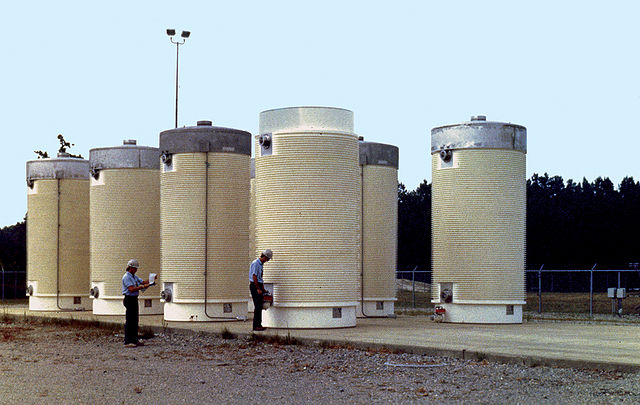Dry cask storage is a method of storing high-level radioactive waste, such as spent nuclear fuel that has already been cooled in the spent fuel pool for at least one year and often as much as ten years. Casks are typically steel cylinders that are either welded or bolted closed. The fuel rods inside are surrounded by inert gas. Ideally, the steel cylinder provides leak-tight containment of the spent fuel. Each cylinder is surrounded by additional steel, concrete, or other material to provide radiation shielding to workers and members of the public.
Dry cask storage area
Multipurpose Constor Storage, Transport, and Disposal Cask
Spent nuclear fuel, occasionally called used nuclear fuel, is nuclear fuel that has been irradiated in a nuclear reactor. It is no longer useful in sustaining a nuclear reaction in an ordinary thermal reactor and, depending on its point along the nuclear fuel cycle, it will have different isotopic constituents than when it started.
Spent fuel pool at a nuclear power plant
Spent nuclear fuel stored underwater and uncapped at the Hanford site in Washington, US
Activity of U-233 for three fuel types. In the case of MOX, the U-233 increases for the first 650,000 years as it is produced by decay of Np-237 that was created in the reactor by absorption of neutrons by U-235.
Spent fuel pool at TEPCO's Fukushima Daiichi Nuclear Power Plant on 27 November 2013






